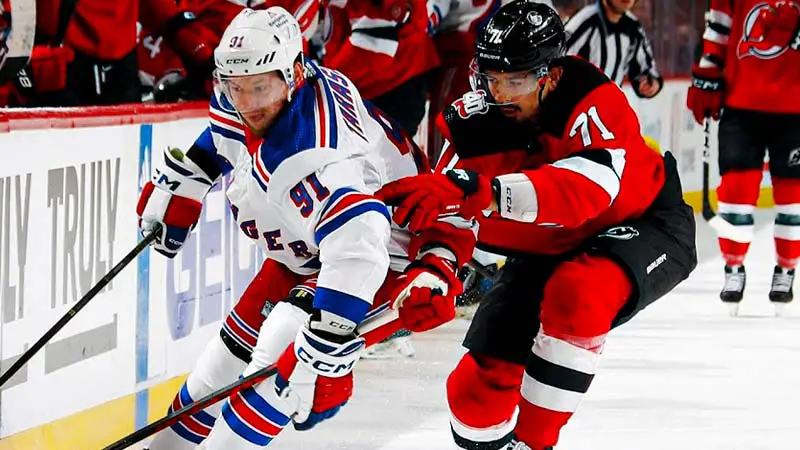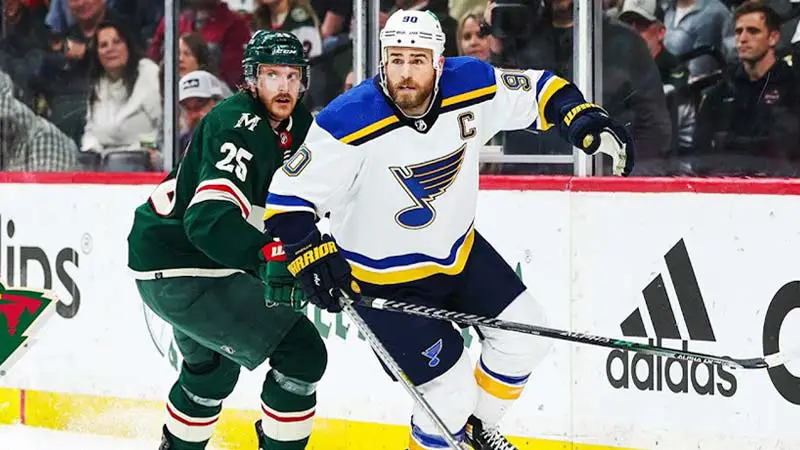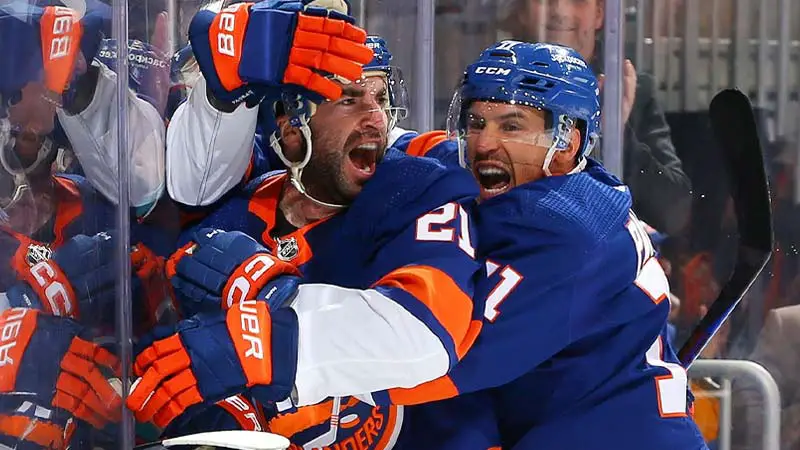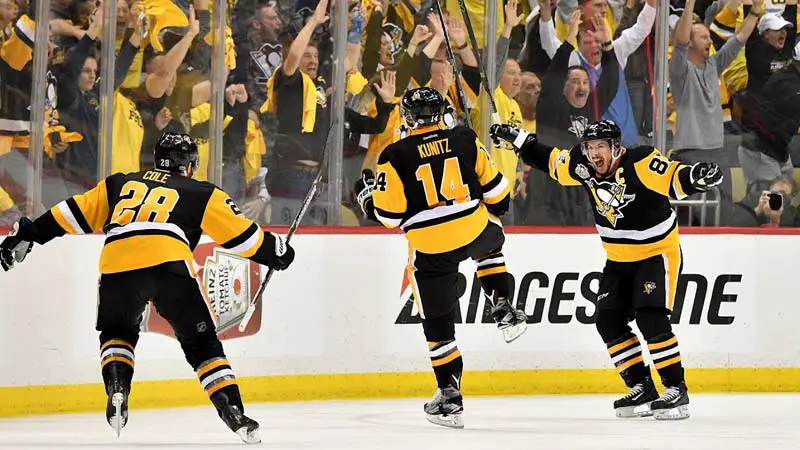As the NHL regular season concludes, the anticipation for the playoffs intensifies, capturing the hearts of hockey enthusiasts worldwide. Understanding how the NHL Playoffs work adds another layer of excitement to the game.
In this comprehensive exploration, we’ll unravel the intricacies of playoff qualification, the series format, and the thrilling journey teams undertake in pursuit of the coveted Stanley Cup.
From seeding strategies to the drama of sudden-death overtime, each aspect contributes to the unique spectacle that is playoff hockey. Join us as we break down the structure, traditions, and fierce competition that defines the NHL Playoffs.
The Basics of NHL Playoffs
The NHL Playoffs, an exhilarating culmination of the National Hockey League (NHL) regular season, mark the quest for the coveted Stanley Cup.
This intense postseason competition showcases the top teams in the league as they battle through a series of rounds to determine the ultimate champion. As the stakes rise, the players’ passion and the fans’ fervor create an atmosphere of unparalleled excitement.
Let’s delve into the basics of the NHL Playoffs, exploring key elements that make this tournament a thrilling spectacle.
Qualification and Seeding
The NHL regular season consists of 82 games for each team, but only 16 out of the 32 teams make it to the playoffs.
The top three teams from each division and two wild-card teams from each conference secure a spot. Teams are seeded based on their regular-season performance, determining the matchups for the initial playoff rounds.
Best-of-Seven Series
The NHL Playoffs employ a best-of-seven series format for each round. Teams face off in a series of games, with the first team to win four games advancing to the next round.
This structure ensures that only the most resilient and consistent teams progress, adding an element of strategy and adaptation.
Round Structure
The playoffs consist of four rounds: the First Round, Conference Semifinals, Conference Finals, and the Stanley Cup Final.
Teams compete within their respective conferences until two champions emerge, facing off in the Stanley Cup Final to determine the overall league champion.
Overtime Drama
Unlike the regular season, playoff games cannot end in a tie. If a game is tied at the end of regulation, teams engage in sudden-death overtime periods until a decisive goal is scored.
The tension and drama of playoff overtime moments are legendary, with players pushing their physical and mental limits to secure victory.
Physical Intensity
The NHL Playoffs are renowned for their heightened physicality. Players are willing to sacrifice their bodies, delivering bone-crushing hits, and engaging in intense battles along the boards and in front of the net.
The physical demands of playoff hockey contribute to the grueling nature of the tournament.
Iconic Traditions
The NHL Playoffs boast unique traditions, such as the handshake line. At the conclusion of each series, players from both teams line up to shake hands, displaying sportsmanship and respect for their opponents.
This tradition highlights the camaraderie and mutual understanding among hockey players.
Conn Smythe Trophy
Awarded annually to the most valuable player (MVP) in the playoffs, the Conn Smythe Trophy recognizes the individual who made the most significant impact on their team’s success.
Whether a goaltender making crucial saves or a forward leading in scoring, the winner of the Conn Smythe Trophy etches their name into NHL history.
The NHL Playoffs encapsulate the essence of hockey at its highest level.
The combination of intense competition, enduring traditions, and individual brilliance converges to create an unforgettable journey towards hoisting the Stanley Cup – the ultimate symbol of supremacy in the world of professional ice hockey.
How The NHL Playoffs Work?

The NHL Playoffs follow a structured format that involves a series of elimination rounds leading to the crowning of the Stanley Cup champion.
Here’s an overview of how the NHL Playoffs work:
Regular Season Standings
The NHL regular season consists of 32 teams, divided into two conferences: the Eastern Conference and the Western Conference. Each conference is further divided into two divisions.
Throughout the regular season, teams compete to earn points based on their game results. The top three teams from each division and two wild-card teams from each conference qualify for the playoffs.
Seeding
Teams are seeded based on their regular-season performance. The division winners are given the top three seeds in each conference, while the wild-card teams are seeded fourth and fifth.
The team with the best record in the regular season is awarded the top seed in the entire league.
First Round
In the First Round of the playoffs, the top seed in each division faces the wild-card team with the lowest point total, and the second and third seeds within the division face each other.
This round consists of a best-of-seven series, and the winners advance to the next round.
Divisional Playoffs
The winners from the First Round move on to the Divisional Playoffs, where they face off within their own division. The divisional playoffs also follow a best-of-seven series format. The victors proceed to the Conference Finals.
Conference Finals
The Conference Finals bring together the winners from each division within a conference. These matchups determine the champions of the Eastern and Western Conferences. Once again, the format is a best-of-seven series.
The teams that emerge victorious earn the right to compete in the Stanley Cup Final.
Stanley Cup Final
The Eastern Conference champion faces the Western Conference champion in the Stanley Cup Final.
This series is also a best-of-seven format. The team that wins four games first is crowned the Stanley Cup champion. The Final series alternates between the home arenas of the two teams, with a 2-2-1-1-1 format.
Conn Smythe Trophy
Throughout the playoffs, a player is awarded the Conn Smythe Trophy for being the most valuable player. This player is recognized for their exceptional performance and contribution to their team’s success.
The culmination of the NHL Playoffs represents the pinnacle of professional hockey, as the winning team celebrates with the iconic Stanley Cup.
The journey involves skill, determination, and often unpredictable moments that captivate hockey fans worldwide.
The Wild Card Race in NHL Playoffs

The NHL Wild Card system adds an element of unpredictability and excitement to the playoff race, allowing teams that did not finish in the top three of their divisions to still qualify for the postseason.
Here’s an explanation of how the Wild Card race works in the NHL Playoffs:
Wild Card Qualification
In each of the NHL’s two conferences (Eastern and Western), the two teams with the highest point totals that did not finish as one of the top three teams in their respective divisions qualify as Wild Card teams.
This means that a team can secure a Wild Card spot based on their overall performance in the regular season, even if they didn’t finish as one of the top teams in their division.
Seeding of Wild Card Teams
The Wild Card teams are seeded fourth and fifth within their respective conferences. They face the top three teams from their own division in the First Round of the playoffs.
The team with the highest point total among the Wild Card teams is designated as the first Wild Card, and the other team is the second Wild Card.
Matchups in the First Round
In the First Round of the playoffs, the first Wild Card faces the division champion with the best record, while the second Wild Card faces the division champion with the second-best record.
This ensures that the Wild Card teams face tough competition right from the start.
Re-Seeding After Each Round
Unlike the traditional bracket-style playoffs where matchups are fixed, the NHL Playoffs feature re-seeding after each round.
The team that advances as the highest seed will face the lowest remaining seed in subsequent rounds. This rewards higher-seeded teams with potentially easier matchups if lower-seeded teams pull off upsets.
Wild Card Team Advancement
If a Wild Card team advances past the First Round, they continue their playoff journey and face the winners of other matchups in subsequent rounds.
Successive victories could see a Wild Card team make a deep run into the playoffs and potentially reach the Stanley Cup Final.
Impact on Regular Season Strategy
The Wild Card race adds intrigue to the regular season as teams strive to secure points not only for divisional placement but also to ensure they have a shot at Wild Card qualification.
The competitiveness often extends to the final games of the regular season, keeping fans engaged until the last puck drop.
Unpredictability and Cinderella Stories
The Wild Card system has led to several memorable underdog stories, with lower-seeded Wild Card teams making unexpected deep runs in the playoffs.
These Cinderella stories contribute to the excitement and drama of the postseason, as any team, regardless of regular-season standings, can emerge as a playoff contender.
The Wild Card race in the NHL Playoffs introduces an element of unpredictability, allowing teams outside the traditional divisional qualifiers to compete for the Stanley Cup.
This system has added excitement and drama to the postseason, making every game crucial for teams in the hunt for a Wild Card spot.
The Stanley Cup Bracket in NHL Playoffs

The Stanley Cup Playoffs feature a bracket-style format that determines the matchups and progression of teams through each round.
The bracket is structured to create a clear path for teams as they advance toward the ultimate goal of winning the Stanley Cup.
Here’s an overview of how the Stanley Cup bracket works in the NHL Playoffs:
Seeding
After the regular season, teams are seeded based on their performance within their respective divisions and conferences.
The top three teams from each division are seeded 1, 2, and 3, and the two Wild Card teams are seeded 4 and 5. The team with the highest regular-season point total in each conference is awarded the top seed.
First Round
In the First Round of the playoffs, the matchups are structured as follows:
- Matchup 1: Division leader (Seed 1) vs. Wild Card 2 (Seed 5)
- Matchup 2: Division second-place team (Seed 2) vs. Division third-place team (Seed 3)
- Matchup 3: Division leader (Seed 1) vs. Wild Card 1 (Seed 4)
- Matchup 4: Division second-place team (Seed 2) vs. Division third-place team (Seed 3)
The winners of these matchups advance to the Second Round.
Second Round (Divisional Playoffs)
In the Second Round, or the Divisional Playoffs, the remaining teams from each division face off:
- Matchup 5: Winner of Matchup 1 vs. Winner of Matchup 2
- Matchup 6: Winner of Matchup 3 vs. Winner of Matchup 4
The winners of these matchups advance to the Conference Finals.
Conference Finals
The Conference Finals consist of two matchups
- Matchup 7: Winner of Matchup 5 from the Eastern Conference vs. Winner of Matchup 6 from the Eastern Conference
- Matchup 8: Winner of Matchup 5 from the Western Conference vs. Winner of Matchup 6 from the Western Conference
The winners of these matchups become the champions of their respective conferences and advance to the Stanley Cup Final.
Stanley Cup Final
The Stanley Cup Final is the culminating series that determines the overall champion of the NHL.
It features the champions of the Eastern Conference and the Western Conference. The winner of this best-of-seven series is awarded the Stanley Cup.
Re-Seeding After Each Round
Unlike some other playoff formats, the NHL employs a re-seeding system after each round. The highest remaining seed faces the lowest remaining seed in subsequent rounds.
This ensures that the team with the best regular-season performance has a potential advantage in later rounds.
Conn Smythe Trophy
Throughout the playoffs, the most valuable player (MVP) is awarded the Conn Smythe Trophy. This player is recognized for their outstanding contribution to their team’s success during the postseason.
The Stanley Cup bracket creates a clear and exciting roadmap for teams, fans, and analysts to follow as the playoffs unfold, building anticipation and drama until a new Stanley Cup champion is crowned.
NHL The Playoff Series in Hockey
In the NHL playoffs, a playoff series is a set of games played between two teams, with the winner determined by the team that first accumulates four victories.
The series format is best-of-seven, meaning that the team that wins four out of the seven games advances to the next round. Let’s delve into the key aspects of playoff series in NHL hockey:
Best-of-Seven Format
Each playoff series is structured as a best-of-seven, ensuring that the team advancing is the one that proves its superiority over the opponent in the majority of the games.
This format emphasizes consistency and resilience, as a team must win four games to move on.
Home-Ice Advantage
The team with home-ice advantage hosts Games 1, 2, 5, and 7, while the opponent hosts Games 3, 4, and 6. The home-ice advantage is determined by regular-season performance, with the higher-seeded team earning the privilege.
This advantage includes having the last change, allowing the home team to determine matchups more effectively.
2-2-1-1-1 Series Structure
The playoff series follows a 2-2-1-1-1 format, meaning that the first two games are played at the higher-seeded team’s arena, followed by two games at the lower-seeded team’s arena.
The series then alternates between home and away games, ensuring a fair distribution of the competitive environment.
Overtime Rules
In the playoffs, if a game is tied at the end of regulation, the teams proceed to sudden-death overtime periods until a goal is scored.
Overtime adds a layer of intensity to the series, with the potential for extended play and dramatic game-winning moments.
Adjustments and Strategy
Coaches play a crucial role in playoff series, making strategic adjustments based on the outcomes of previous games.
Line changes, defensive schemes, and special teams play a significant role as teams try to exploit weaknesses and capitalize on opportunities.
Physicality and Intensity
Playoff hockey is known for its increased physicality. As the series progresses, tensions often rise, and the physical demands on players become more pronounced.
Checking, hitting, and battles in front of the net intensify as teams fight for supremacy.
Momentum and Psychological Factors
Momentum is a key factor in a playoff series. Winning one or two games in a row can shift the psychological dynamics of the series, putting pressure on the opposing team.
Teams must manage the emotional highs and lows of the playoffs to maintain focus and resilience.
The playoff series in NHL hockey is a captivating and strategic battle between two teams, with the best-of-seven format adding an element of endurance and skill to the quest for the Stanley Cup.
The series structure, combined with the unique challenges of playoff hockey, contributes to the drama and excitement that make the NHL playoffs a thrilling spectacle for fans worldwide.
FAQs
How do teams qualify for the NHL Playoffs?
Teams qualify for the NHL Playoffs based on their regular-season performance.
The top three teams from each division and two wild-card teams from each conference make it to the postseason, resulting in a total of 16 teams competing for the Stanley Cup.
What is the format of the NHL Playoffs?
The NHL Playoffs follow a best-of-seven series format for each round. Teams face off in a series of games, and the first team to win four games advances to the next round.
This structure is maintained throughout the First Round, Divisional Playoffs, Conference Finals, and the Stanley Cup Final.
How are playoff matchups determined?
Playoff matchups are determined by seeding. The top three teams in each division are seeded 1, 2, and 3, while the two wild-card teams are seeded 4 and 5.
The highest-seeded team faces the lowest-seeded team in each round, with subsequent rounds re-seeding based on performance.
What happens in case of a tied game during the playoffs?
If a playoff game is tied at the end of regulation, teams proceed to sudden-death overtime periods until a decisive goal is scored.
Overtime continues until one team scores, providing a thrilling and potentially extended conclusion to tied playoff games.
Is there a trophy for the most valuable player in the playoffs?
Yes, the Conn Smythe Trophy is awarded to the most valuable player in the NHL Playoffs.
This prestigious trophy recognizes an individual’s exceptional contribution to their team’s success throughout the postseason, highlighting outstanding performance, leadership, and impact on the team’s overall achievement.
Wrapping Up
In the world of professional ice hockey, the NHL Playoffs stand as the pinnacle of competition, where dreams are realized and legends are born.
As teams battle through the grueling best-of-seven series, the heart-stopping moments, overtime heroics, and strategic maneuvers become indelible chapters in the sport’s history.
The crescendo of excitement reaches its peak in the Stanley Cup Final, where only one team emerges triumphant.
Beyond the statistics and standings, the NHL Playoffs embody the essence of hockey’s intensity, showcasing the resilience of athletes and the passion of fans.
Whether it’s the handshake line after a hard-fought series or the raising of the Stanley Cup, the playoffs etch unforgettable memories that resonate in the hearts of hockey enthusiasts, cementing the tournament’s status as a thrilling saga that transcends the sport itself.








James Felix